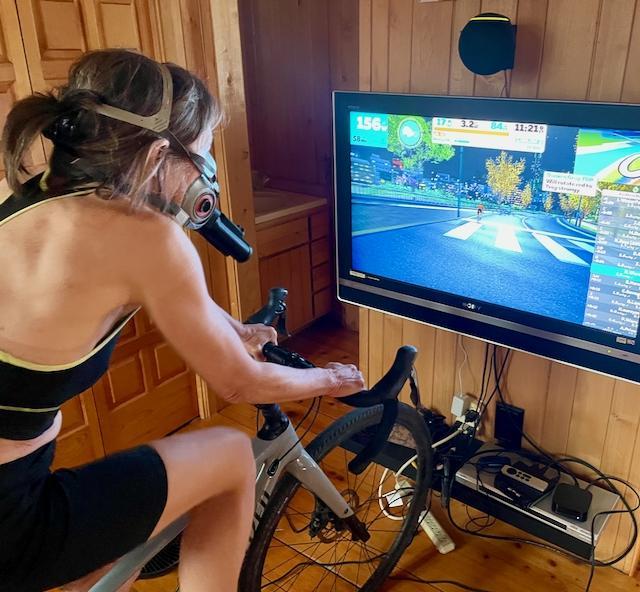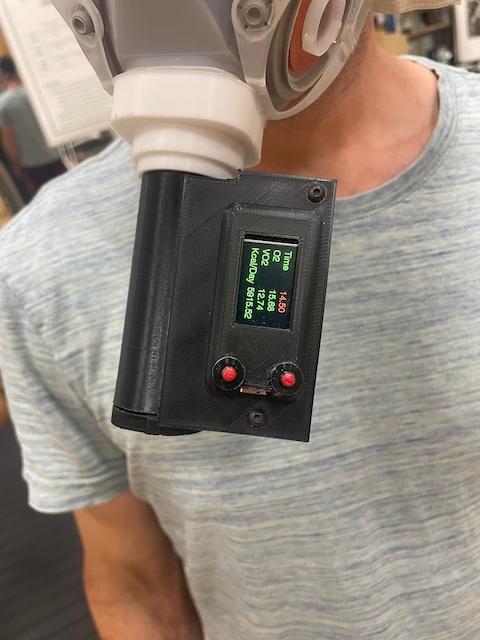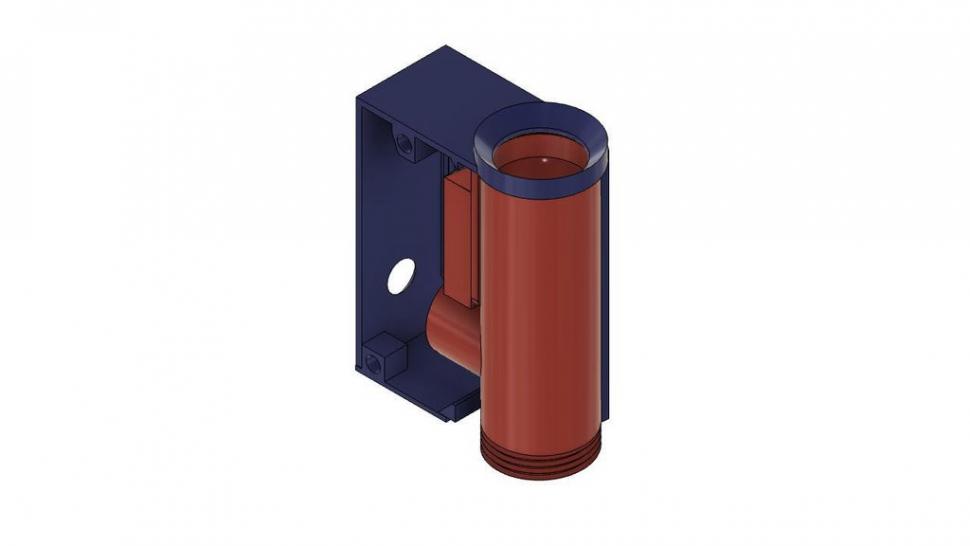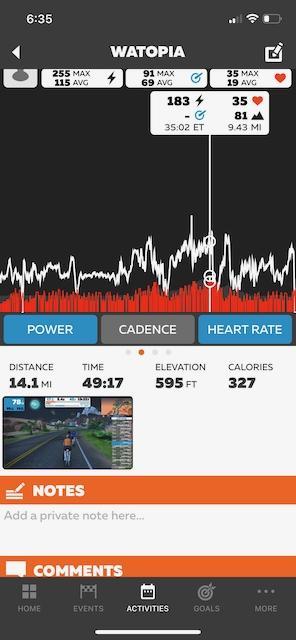- News
- Reviews
- Bikes
- Components
- Bar tape & grips
- Bottom brackets
- Brake & gear cables
- Brake & STI levers
- Brake pads & spares
- Brakes
- Cassettes & freewheels
- Chains
- Chainsets & chainrings
- Derailleurs - front
- Derailleurs - rear
- Forks
- Gear levers & shifters
- Groupsets
- Handlebars & extensions
- Headsets
- Hubs
- Inner tubes
- Pedals
- Quick releases & skewers
- Saddles
- Seatposts
- Stems
- Wheels
- Tyres
- Tubeless valves
- Accessories
- Accessories - misc
- Computer mounts
- Bags
- Bar ends
- Bike bags & cases
- Bottle cages
- Bottles
- Cameras
- Car racks
- Child seats
- Computers
- Glasses
- GPS units
- Helmets
- Lights - front
- Lights - rear
- Lights - sets
- Locks
- Mirrors
- Mudguards
- Racks
- Pumps & CO2 inflators
- Puncture kits
- Reflectives
- Smart watches
- Stands and racks
- Trailers
- Clothing
- Health, fitness and nutrition
- Tools and workshop
- Miscellaneous
- Buyers Guides
- Features
- Forum
- Recommends
- Podcast
TECH NEWS
 2022 Instructables VO2 device 9
2022 Instructables VO2 device 9Here's how to make a DIY VO2 max tester for use with Zwift and Strava for only £130
Instructables has designed a device you can make at home yourself which it claims provides accurate VO2 readings, that can be displayed on the Zwift screen while you are pedalling as a substitute for heart rate sensor data. It can also be paired with the Strava app.
This opens up a new metric for monitoring and measuring your training, and it’s pretty cheap too. The cost of the parts for Instructables' homemade V02 reading device comes to just around £130, but you’ll need a 3D printer to make the case for the device, though.
> Getting a VO2 max test
The output of the device includes the continuous output of VO2, calories consumed and volumes of expired gas. It can also perform functions such as Basal Metabolic Rate.
First off, why is measuring V02 something that you should consider using for your regular workouts?
> How training zones can help you get your greatest cycling fitness gains
Instructables summarises: “Human bodies are engines that utilise oxygen to burn fuel. Humans are not built with gauges and checking to see how the human engine is running is usually based on things we find easy to measure: pulse, blood pressure. These do not directly tell us how the engine is burning its fuel.
"Measuring the amount of oxygen used with exertion provides better information on how hard the bodies engine is working - the equivalent of looking at the gauges on your cars dashboard.”
What do you need?
The main parts to the homemade device are a differential pressure sensor, an oxygen sensor (both of which are connected by I2C to a TTGO Esp32 microcontroller with screen) and a lipo battery with switch.
The original unit included a Laser CO2 sensor and an analogue version of the differential pressure sensor, but Instructables explains that the digital version of the sensor was found to be "much more accurate" and with a better range of 1--250 Pa.
Instructables reckons you can make your own for around $100, that’s equal to about £75.
That said, when searching for these products online myself, it’s looking like you can expect to pay around £130 for sourcing all these parts in the UK.
Here’s your shopping list and the roughly what you can expect to pay for each item:
- TTGO T-Display ESP32 CP2104 WiFi bluetooth Module 1.14 Inch LCD Development Board - £14.50
- Omron--D6F-PH0025AD2 - £25
- DF Robot Gravity I2C Oxygen Sensor - £49
- Lipo Battery 1000 Mah - £8.50
- Switch On/Off - £4.50
- Particulate Respirator Mask 3M - £25.50
Then you’ve got to make the case for the unit...well 3D print it, anyway. Instructables has all the files you need for this over here in the 'Step 2: 3D Print Your Parts' section.
The body of the unit consists of three parts, "the most important being the venturi tube with ports for both the differential pressure sensor and the oxygen sensor,” Instructables explains.
“The measurements of the internal structure of the throat are carefully laid out and measured and cannot be changed or it will drastically effect the results of the output.”
Instructables fully runs through the process of wiring, building, programming and pairing the device with Zwift and Strava in its thorough coverage of the device over here.
On the Instructables site (in the 'Step 5: Program It' section) you'll find the program FinalZwiftConnect with files DFRobot_OxygenSensor.cpp and DFRobot_OxygenSensor.h which can be used to broadcast VO2 max data recorded by the device to either Zwift or Strava.
> How to use Strava to make you fitter
How does this program work with the device? “The loop function checks the Omron sensor for a pressure drop and initiates a time function to calculate the total volume of air moving past the sensor using Bernoulli's equation,” Instructables explains.
“Every five seconds if there is no breath the seeO function is called to check the O2 level.
“At thirty second intervals the goFigure function calculates the minute volume of expired O2 and calculated levels of CO2 and VO2 Max.
“The program sends the bluetooth characteristic to the Zwift receiver on either your Mac or Apple TV masqueraded as the Heart Rate which approximates a typical VO2 max level.
“The ESP32 screen then presents alternatively Time, VO2, VO2Max, Cal burned, Max Cal/Day, O2 level and Volume (Litres of O2 used)."
How accurate is it?
Instructables says it tested the device in a physiology lab against a $60,000 (~£45,000) machine that’s normally used for testing VO2 max, finding that it gave “about the same results”.
In order to achieve its compact form, Instructables admits several compromises were made in the design of the homemade device, with the most significant being the omission of a CO2 sensor.
“CO2 sensor data helps refine the difference between volume inhaled and exhaled which are not exactly the same,” Instructables notes. “Volumes of these two gases relative to unchanging amount of nitrogen in room air makes this possible, but is this a really significant difference? Humans are a fairly subjective test animal and within the limits of testing humans do these things matter?”
Instructables took its unit to the University of Alaska physiology lab to put it to the test against a $60,000 (~£45,000) machine that’s normally used for testing VO2 max. All machines are benchmarked for checking a standardised volume with a three litre syringe; the findings were that the lab unit passed with all measurements being +/- 50cc, while the Instructables unit achieved +/- 100cc accuracy.
“An error this small over litres of air/min is not that significant,” Instructable claims. “Standardised gas (O2 16%) was then passed through our O2 sensor and found to be off by only 0.16%.
“We then ran our test subject through two levels of testing on the treadmill. The results from both O2 volume and VO2 readings were nearly identical."
It adds: “While there was significant minute to minute variability in the VO2 output from the lab machine the averages per minute turned out to be about the same with each instrument.
Instructables notes that a more thorough test would involve more test subjects and extended periods of testing of each instrument.
You may not want to go through the hassle of building one yourself, but is a portable VO2 reader a product you’d consider buying? Let us know in the comments as always!
Anna has been hooked on bikes ever since her youthful beginnings at Hillingdon Cycle Circuit. As an avid road and track racer, she reached the heady heights of a ProCyclingStats profile before leaving for university. Having now completed an MA in Multimedia Journalism, she’s hoping to add some (more successful) results. Although her greatest wish is for the broader acceptance of wearing funky cycling socks over the top of leg warmers.
Latest Comments
- bikeman01 47 min 4 sec ago
Its a rear window not a rear windscreen.
- ridein 1 hour 56 min ago
I wonder if you could use a Northwave shoe (w/Speedplay drilling) on the Ekoi pedal. Possibly using one Look pattern cleat hole and two Speedplay...
- Surreyrider 3 hours 39 min ago
I've worked in local government before and some really don't need any training for that - they're already masters!
- Rendel Harris 7 hours 36 min ago
They have here: results at 14.40. The aero bike was roughly fifteen seconds faster than a climbing bike on a descent of around 6 km, so about 3km/h...
- wtjs 7 hours 50 min ago
As I've also placed here the nutter Audi and white van drivers, I've decided to give those no-nonsense keep-the-country-moving BMW drivers a list...
- polainm 8 hours 53 min ago
100% this. Policing mentality is formed by social 'norms', and the cyclist witchhunting across social media is the UK norm. Close passing a person...
- David9694 10 hours 18 min ago
That's a clear 2 points awarded there, but I guess as there's now a 25% tariff you'll only get 1.5
- mark1a 10 hours 29 min ago
Fawkes Cycles is only local if you live near Oldham. That's nearly 300 miles away from me. Also, any retailer that doesn't participate in an...
- David9694 10 hours 31 min ago
Openreach under fire over delays to Amesbury cabinet repairs...
- Destroyer666 18 hours 29 min ago
Anodizing the aluminium is also for corrosion resistance and therefore enhances the longevity of the rims while this is not really a case for...







Add new comment
9 comments
Really? An absolute waste of money......A fool and their money are easily parted. Unless you're a pro, or maybe semi-pro you surely don't require this.......
How about actually enjoying the ride, the scenery, etc
A lovely bit of creativity but, without going too much into the science of this, I have a few caveats;
1) errors are multiplied in the VO2 calculations so relatively small errors in gas concentrations and volume can mean big errors in VO2.
2) VCO2 is a really important measure. VCO2 increases linearly with VO2 as exercise intensity increases up to a point. If the 2 intensities used in the validation testing were below this, then estimated VCO2 is probably a reasonable guess but it is the point at which that relationship between VO2 changes that is one of the key physiological markers. Without VCO2 measurement, VO2 doesn't really add much information over power.
3) minute averages can hide a lot. These 2 data sets have the same average;
a) 10, 10, 10
b) -100, 30, 100
but can hardly be said to be equally valid measures of the same parameter.
Also, do not try doing your own VO2 Max. tests at home. I run a lab where we do this kind of testing and even on elite athletes we require stringent safety measures e.g. a defib to hand and someone trained to use it supervising. The test is designed to push the body to it's limits and you can have issues even with fit apparently healthy people.
So, if you want a VO2 Max. test, spend the money on going to a proper lab. If you want a project to play with, this looks like lots of fun.
Why is the song Blue Velvet running through my head now...
They used to sell PBR in The Rock Garden (Queen St., Glasgow) in the mid 1980's.
I'm guessing zero, with that thing on your face.
Alternatively just buy a watch that estimates its. (Garmin Apple & others) It tells the time too!
Not much use when they only go up to 80 and your vo2 is higher than that.
No use for Greg lemond then
If your vo2 is higher than 80 then I'd hope you have access to better equipment than a smart watch. I quite like being told that I'm 'superior' and in the top 1%; I choose not to think about how wildly inaccurate the calculation likely is as it can't even get my HR correct during workouts.